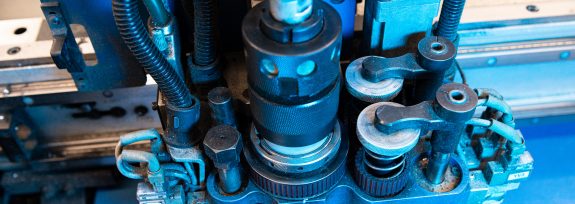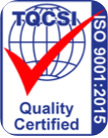CNC Cutting
Computer numerical controlled cutting – what is it and why do we have it?

What is a CNC machine?
CNC stands for ‘computer numerical controlled’, and in basic terms means a machine’s movement and operation ithat’s controlled using software and programmable controllers. CNC machines can come in a variety of different forms. This can include machines such as lathes and presses (using simpler operations), more complex flatbed cutting machines (such as a waterjet cutting machine or laser cutting machine), to even more advanced CNC machinery such as 5-axis machining centers capable of intricate 3D profiling. Generally, CNC machines are programmed via a CNC controller, and a drawing file (either 2D or 3D) is created and programmed so that the CNC controller understands the operations required to complete a given task. Many modern CNC machines also have an operating system (such as Windows) to allow for easy programming and configuring of its software and programs.
What are the advantages of a CNC machine?
The main advantages of a CNC machine are higher productivity, better quality finishing, and a reduction in operating cost when it comes to manufacturing.
High productivity
When programmed effectively, a CNC machine can allow for very precise operation without any manual involvement. This allows for higher productivity and efficiency when manufacturing, as the machine itself is providing repetitive and reliable movements to a consistent tolerance and standard. This is in contrast to manual labour techniques which slow down the process and increases the chances of error and variance.
Better quality finish
Because of repetition, CNC machines are able to produce products identical each time. This ensures a very consistent and high-quality finish. For items requiring tight dimensional tolerances, CNC machinery can achieve incredible results. In our case, we can achieve tolerancing as low as +/-0.02mm.
Reduction in operating cost
Finally, CNC machines contribute to lowering operating overheads and overall manufacturing costs. This is fundamentally due to a reduction in quality-related errors, consistent processing of products, and the allowance of autonomous cutting which frees up employee utilisation
What types of CNC machinery does PRP have?
PRP currently utilises flatbed CNC cutting machinery, with a specialisation in softer materials such as rubber, sponge, foam and plastic. PRP has waterjet cutting machinery, oscillating knife cutting machinery, laser machines, routers, and die-press technology. All of these machines are programmable via a Windows-based operating system.
Waterjet cutting
Waterjet cutting is a very impressive piece of machinery that operates by cutting materials using water at extremely high pressure. Water is fed into a pump, whereby it is sent by high pressure through a water line and into the head of the machine. The water passes an orifice, and out through a nozzle with pressures exceeding 50,000psi or 3450 bar. Water-only cutting is perfect for most rubbers, sponges, foams, and some plastics. With the addition of an abrasive, water cutting can be used to cut nearly anything, including mild steel, stainless, copper and aluminum.
Laser cutting
Laser cutting in manufacturing is generally performed by using either CO2 laser tubes or fiber laser technology. CO2 lasers use a laser tube that emits a beam of light. This beam is reflected onto the cutting bed. Fiber lasers on the other hand emit light using laser diodes. These are sent through a fiber optic cable, which is projected onto the cutting bed. CO2 generally is suited for non-metallic cutting, but they can also cut metals at high powers. Fiber lasers are more efficient at cutting metals as they can process metals at quicker speeds using lower levels of power.
Knife cutting
Knife cutting is a technology that uses tungsten carbide blades that oscillate at fast speeds. Cutting blades vary in size and shape, with specialised blades as small as 6mm for cutting thin, rigid material, all the way through to blades in excess of 100mm designed for softer foams. The blades use pneumatic air to drive the oscillations, while air is also used to provide a vacuum on the cutting bed. The tooling head usually allows for multiple tools, including drills, creasing wheels, punches, and routers.
Router cutting
Router cutting is a process that uses a spindle and cutting tool that rotates at incredibly high revolutions per minute. The combination of speed and feed rate predominately drives the ability to router away material and create a profile. Routers can be liquid or air-cooled, can rotate up to 36,000rpm, and can also come provided with vacuum tables to help hold materials onto the cutting bed. Like knife cutting, routers have multi-tool changers, allowing for different tools to be used within the same manufacturing process.
Die cutting
Die cutting is a hydraulic system that presses down at incredibly high force to cut or ‘stamp a profile into the required shape. Die cutting beds can vary in size, and can be either manually controlled or via fully autonomous operation. Unlike the other technologies, die cutting requires the use of a cutting tool, which is a secondary tool created specifically for the given profile. Die cutting is therefore suited to medium to high batch runs where high repetition is required.
PRP provides advanced flatbed CNC cutting and engineering services for a wide range of industries. To find out more, please feel free to click on our capabilities link below:
